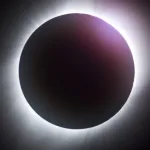There are billions of stars out there, however, it’s the planets that often attract people to the hobby of astronomy. And there are as many reasons for enjoying the views of distant planets as there are people doing the viewing. Saturn with its mysterious rings is always a favorite when people ask to look through my telescope. Mars and its reddish dust storms, the hazy blue color of Neptune.
I enjoy Jupiter. It’s not only the largest planet in our solar system, one of its features is a storm, the Great Red Spot, that’s larger than our entire plant. And it has a host of moons, always changing position throughout the night. For amateurs with limited equipment and limited budgets, the planet’s details are tough to see, however, the position of its four primary moons is always visible, even with binoculars.
Currently, the end of December, Jupiter is low in the southwestern sky as is Saturn. In fact, because of their orbits, they’ll appear very close; a conjunction astronomers call it. On December 21 they will appear to be a single star even though they are millions of miles apart. If you have a chance, get out just after sunset and take a look at these two gas giants. They’ve not appeared this close in 800 years and won’t line up again like this until 2080.


